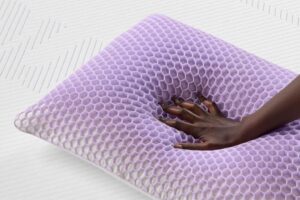Tech Integration: The Future of Smart Clothing Starting with Blank

Imagine putting on a plain white t-shirt that transforms into a fitness tracker, health monitor, and communication device all at once. This isn’t science fiction – it’s the rapidly approaching reality of smart clothing technology. What starts as a blank canvas today is becoming the foundation for tomorrow’s most revolutionary wearable innovations.
The convergence of textile manufacturing and advanced electronics is creating unprecedented opportunities in the fashion and technology sectors. Smart clothing, also known as e-textiles or wearable technology, represents a paradigm shift from traditional garments to intelligent, responsive fabrics that can monitor, adapt, and interact with both the wearer and their environment.
The Evolution of Wearable Technology
Smart clothing has evolved far beyond the early days of bulky fitness trackers and awkward wearable devices. Today’s intelligent textiles seamlessly integrate sensors, microprocessors, and connectivity features directly into fabric fibers, creating garments that are virtually indistinguishable from conventional clothing.
The journey begins with blank apparel – the foundation upon which all smart clothing innovations are built. These base garments, whether t-shirts, jackets, or athletic wear, serve as the canvas for embedding sophisticated technology. The transformation process involves integrating conductive fibers, miniaturized sensors, and flexible electronics into the fabric structure without compromising comfort, durability, or aesthetic appeal.
Leading manufacturers are developing smart fabrics using various approaches. Some incorporate metallic threads or conductive polymers during the weaving process, while others apply nano-coatings or embed ultra-thin electronic components post-production. The result is clothing that maintains the look and feel of traditional textiles while offering advanced technological capabilities.
Key Technologies Driving Smart Clothing Innovation
Sensor Integration and Biometric Monitoring
Modern smart clothing incorporates multiple sensor types to collect comprehensive health and performance data. Heart rate monitors, temperature sensors, accelerometers, and gyroscopes can be seamlessly woven into fabric fibers, providing continuous monitoring without the need for separate devices.
These embedded sensors offer several advantages over traditional wearables. They provide more accurate readings by maintaining consistent contact with the skin, eliminate the need for additional accessories, and offer a more comfortable user experience. Smart athletic wear can track muscle activity, breathing patterns, and body temperature, providing athletes and fitness enthusiasts with detailed performance analytics.
Connectivity and Data Processing
Smart clothing relies on wireless connectivity to transmit data to smartphones, tablets, or cloud-based platforms. Bluetooth Low Energy (BLE) and Wi-Fi technologies enable real-time data transmission while maintaining extended battery life. Some advanced garments incorporate 5G connectivity for faster data transfer and enhanced functionality.
Edge computing capabilities within smart clothing allow for on-device data processing, reducing latency and improving privacy. This means garments can analyze biometric data locally and provide immediate feedback to users without relying on external devices or internet connectivity.
Adaptive Materials and Responsive Fabrics
Smart clothing goes beyond passive monitoring to include adaptive materials that respond to environmental conditions or user preferences. Temperature-regulating fabrics can automatically adjust their thermal properties based on weather conditions or body temperature. Color-changing materials allow users to customize their appearance through smartphone apps.
Shape-memory alloys and programmable textiles enable garments to change their fit, structure, or functionality based on specific triggers. Athletic wear might tighten during high-intensity activities for additional support, while casual clothing could adjust its breathability based on ambient temperature.
Industry Applications and Market Potential
Healthcare and Medical Monitoring
The healthcare sector represents one of the most promising applications for smart clothing technology. Medical-grade smart garments can continuously monitor vital signs, detect irregularities, and alert healthcare providers to potential issues before they become serious problems.
Patients with chronic conditions benefit from continuous monitoring without the inconvenience of traditional medical devices. Smart clothing can track medication adherence, monitor recovery progress, and provide early warning signs of health complications. This technology is particularly valuable for elderly patients, individuals with mobility limitations, and those managing complex medical conditions.
Athletic Performance and Fitness
Professional athletes and fitness enthusiasts are early adopters of smart clothing technology. Performance-monitoring garments provide detailed insights into training effectiveness, recovery needs, and injury prevention. Smart compression wear can adjust pressure levels based on muscle fatigue, while intelligent athletic shoes can analyze running gait and provide real-time coaching feedback.
The global sports and fitness market continues to drive innovation in smart clothing, with manufacturers developing specialized garments for different sports and activities. From swimming suits that track stroke efficiency to cycling jerseys that monitor power output, sport-specific smart clothing is becoming increasingly sophisticated.
Fashion and Personal Expression
Smart clothing is transforming fashion by enabling dynamic, interactive garments that respond to user preferences and environmental conditions. LED-embedded fabrics can create stunning visual effects, while programmable textiles allow for endless customization possibilities.
Fashion brands are exploring smart clothing as a way to differentiate their products and create unique consumer experiences. Interactive garments that change color, pattern, or texture based on user input represent a new frontier in personal expression and style.

Manufacturing Challenges and Solutions
Scalability and Cost Considerations
One of the primary challenges in smart clothing production is scaling manufacturing processes while maintaining cost-effectiveness. Traditional textile manufacturing must be adapted to accommodate electronic components, sensors, and connectivity features without significantly increasing production costs.
Manufacturers are developing new production techniques that integrate technology during the fabric creation process rather than adding components post-production. This approach reduces costs, improves durability, and creates more seamless integration between textiles and technology.
Durability and Washability
Smart clothing must withstand the same wear and care requirements as traditional garments. This includes regular washing, stretching, and exposure to various environmental conditions. Manufacturers are developing waterproof electronic components, flexible circuit designs, and washable sensors that maintain functionality after multiple wash cycles.
Advanced encapsulation techniques protect electronic components from moisture, chemicals, and mechanical stress. Some manufacturers are creating modular designs that allow electronic components to be removed before washing, while others are developing fully washable smart textiles that maintain their functionality indefinitely.
Power Management and Battery Life
Efficient power management is crucial for smart clothing adoption. Garments must operate for extended periods without requiring frequent charging or battery replacement. Manufacturers are exploring various power solutions, including flexible batteries, energy harvesting technologies, and wireless charging capabilities.
Some smart clothing incorporates solar cells or kinetic energy harvesting to supplement battery power. Others use ultra-low-power electronics that can operate for weeks or months on a single charge. The development of more efficient power management systems continues to be a key focus area for manufacturers.
Future Trends and Innovations
Artificial Intelligence Integration
The future of smart clothing includes sophisticated AI capabilities that can learn from user behavior, predict needs, and provide personalized recommendations. Machine learning algorithms will analyze biometric data patterns to offer health insights, fitness guidance, and lifestyle recommendations.
AI-powered smart clothing will become increasingly predictive, identifying potential health issues before symptoms appear, optimizing athletic performance based on individual physiology, and adapting to user preferences automatically.
Sustainable and Eco-Friendly Materials
Environmental consciousness is driving innovation in sustainable smart clothing materials. Manufacturers are developing biodegradable electronic components, recycled conductive fibers, and environmentally friendly production processes.
The circular economy model is being applied to smart clothing, with manufacturers designing garments for easy disassembly and component recycling. This approach addresses environmental concerns while creating new business opportunities in the growing sustainable fashion market.
Augmented Reality and Virtual Integration
Smart clothing will increasingly integrate with augmented reality (AR) and virtual reality (VR) systems, creating immersive experiences that blend physical and digital worlds. Haptic feedback systems embedded in clothing will provide tactile sensations in virtual environments, while AR integration will enable new forms of social interaction and communication.
Market Outlook and Investment Opportunities
The global smart clothing market is experiencing rapid growth, driven by increasing consumer awareness of health and fitness, technological advancements, and growing demand for connected devices. Market analysts project significant expansion over the next decade, with opportunities spanning healthcare, sports, fashion, and industrial applications.
Investment in smart clothing technology is attracting attention from venture capitalists, technology companies, and traditional fashion brands. The convergence of textile manufacturing and electronics is creating new market categories and business models that didn’t exist just a few years ago.
Read Also: Does Wearing More Clothes Keep You Cooler?
Conclusion: Embracing the Smart Clothing Revolution
Smart clothing represents more than just a technological novelty – it’s a fundamental shift in how we think about garments, health monitoring, and personal technology. Starting with blank apparel as the foundation, manufacturers are creating intelligent textiles that seamlessly integrate advanced technology into our daily lives.
The future of smart clothing is bright, with innovations in sensor technology, artificial intelligence, and sustainable materials driving continued growth and adoption. As manufacturing processes become more efficient and costs decrease, smart clothing will transition from niche products to mainstream consumer goods.
Ready to explore the future of wearable technology? Subscribe to our newsletter for the latest updates on smart clothing innovations, industry trends, and emerging technologies. Join the conversation about how intelligent textiles will reshape fashion, healthcare, and personal technology in the years ahead. Don’t miss out on the smart clothing revolution – stay informed and be part of the future today.
Read More: Formal Pant Shirt New Style: Embracing Elegance and Sophistication








